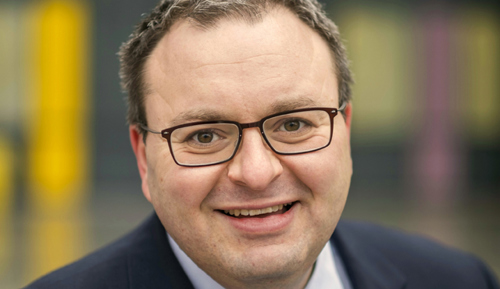
How many children need our care? Using data to inform the future.
Data is an integral part of the planning process when providing palliative and support care for children and families across Scotland. Following his appearance at DataFest20, Scotland’s festival of Data Innovation, our CEO Rami Okasha outlines how we use data at CHAS to identify numbers and needs for our services.

Working with the Scottish Government, CHAS commissioned the first single-nation study in the world into the number of children with life-shortening conditions, published in 2015. Specialist researchers at the University of York undertook complex research to find out the numbers and published a groundbreaking report called ‘Children in Scotland Requiring Palliative Care (CHISP)’. There were some startling findings: the numbers were probably three times higher than estimated, with many more babies in need of care than we thought. This data led to our three year plan, called ‘Reaching Every Family in Scotland’, and helped us re-shape our care in light of the needs highlighted by the research.
Last year, we refreshed this data and published CHISP2. The research was undertaken by the information statistics division at NHS Scotland. Scotland has some of the highest-quality and most comprehensive health data in the world, so it was a real fit for CHAS to commission this work.
The new data published in 2019 showed that, as medicine advances, the number of children with a life-shortening condition continues to rise. There are now nearly 16,000 people aged 0-21 who have a life-shortening condition in Scotland. Of these, the vast majority are stable and some may well live well into adulthood. About a third attend hospital regularly. There are about 2,000 children and young people who are much more unstable, deteriorating or are dying. About 150 children died from a life-shortening condition in the most recent year for which data is available.
Examining and understanding that data has prompted CHAS to change how we deliver our services. The data showed that the majority of children who die are under the age of 5, and of those most are babies under the age of 1. In response, we have been extending our expertise in supporting very young babies. We now have a team – with medical, nursing and family support input – in the Simpson Centre of Reproductive Health in Edinburgh. They support babies and families, even where they just have days or hours together. The team shares their knowledge and experience across Scotland. And in our hospices, our dedicated teams are building skills in supporting young babies and children with very complex medical needs.
The data also show that across all ages, most children who die from a life shortening condition die in hospital. CHAS wants to be there for all children, so we worked with NHS Greater Glasgow and Clyde to establish Scotland’s first palliative care team in Glasgow’s Royal Hospital for Children – only the second such team outside of Great Ormond Street in London. Even after a few months, families say it has made a huge and positive impact on them. We have worked with NHS Grampian to establish a team in Aberdeen, and are working with NHS Lothian on similar plans for Edinburgh.
The data also shows us that many children with life-shortening conditions experience poverty. Over 25% of all such children live in the poorest households in Scotland. This reflects both the health inequalities which scar society, and the complex lives that some families lead: often parents need to stop working when supporting a very ill child and may struggle to pay a mortgage. In response, CHAS has expanded our team of social workers and this year started a new money advice service. This helps families going through the hardest of times.
The data also shows the prevalence of life-shortening conditions is higher amongst some ethnicities rather than others, particularly families from South Asian and Black backgrounds. I have worked with colleagues to develop a new equality, diversion and inclusion strategy which will help us deliver culturally competent care to a wider range of families. We have worked with Edinburgh Napier University to arrange a three year funded PhD to examine the ways in which barriers to accessing children’s palliative care can be reduced for families from South Asian backgrounds. Working closely with colleagues, we will put the knowledge generated from this research into practice.
Having such rich data helps us to plan new services that sit alongside our two hospices, Rachel House and Robin House. Our journey continues – we have just commissioned CHISP3 to ensure the data we have is the most up to date and we now employ a data analyst to help make best use of the information at our disposal.
Often in Scotland we talk about using evidence to plan public services. For CHAS, data is a great source of evidence. When coupled with the experiences and insights from children and families about what works for them, it is a powerful tool to help plan, implement and deliver the best care services.
